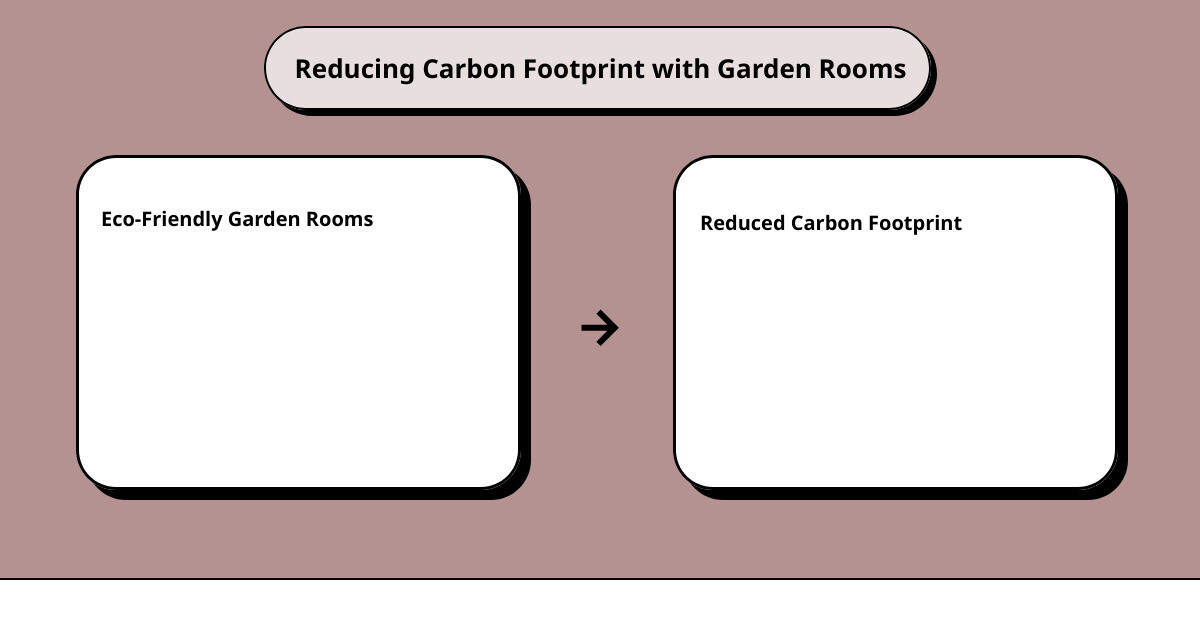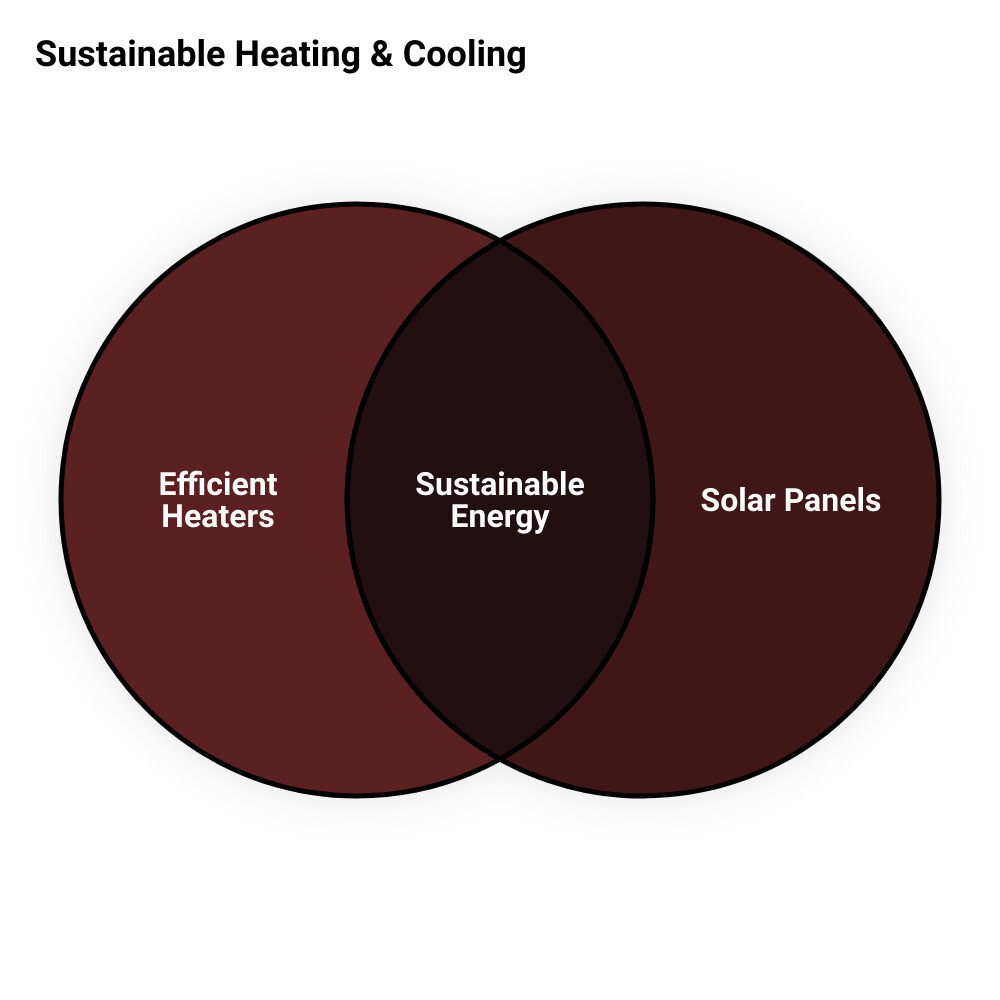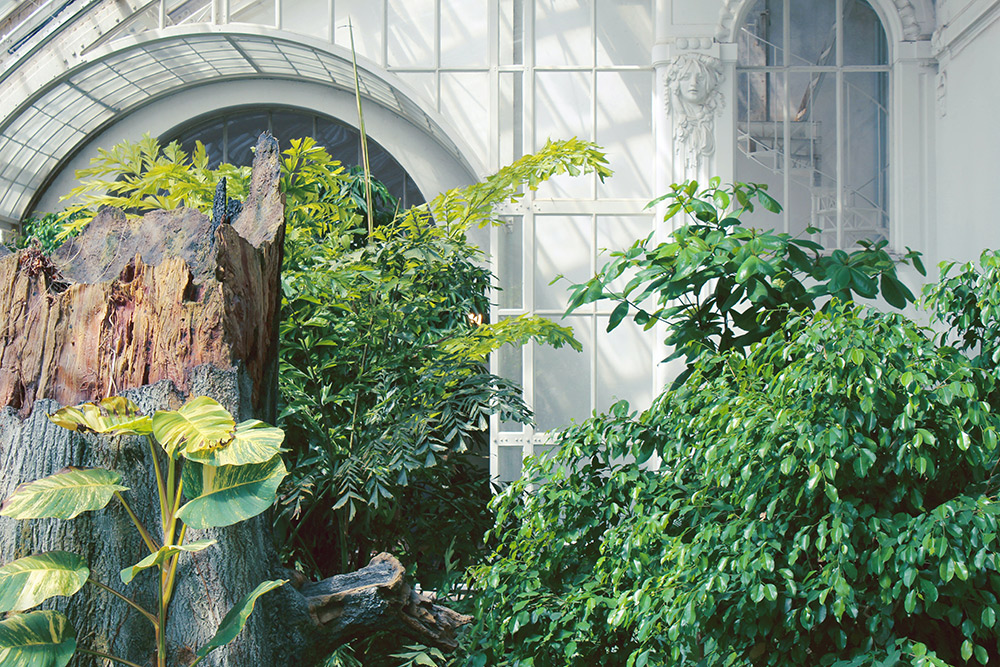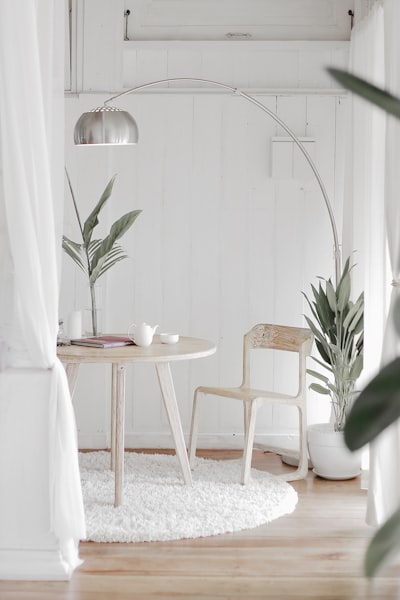The idea of creating a tranquil oasis right in your backyard has been gaining traction in recent years. But what if you could do that while also making a positive contribution to the environment? Enter the world of eco-friendly garden rooms. This article, ’10 Eco-Friendly Garden Room Ideas for Sustainable Living’, explores innovative and sustainable ideas for your garden room, making it a haven not just for you but also for the environment. From using sustainable materials to incorporating renewable energy options, these ideas are not only practical but also align with the ethos of sustainable living. So let’s delve into the world of eco-friendly garden rooms and discover how you can transform your outdoor space while staying true to your commitment to the environment.
The Rise of Eco-Friendly Garden Rooms
The Growing Popularity of Sustainable Living Spaces
Green living is no longer a niche interest but a mainstream movement, and the rise of eco-friendly garden rooms reflects this shift. Garden rooms, traditionally seen as leisure spaces, have evolved into versatile, sustainable extensions of our homes. These eco-friendly spaces serve a multitude of purposes – from a serene retreat to a bustling home office, and everything in between. Constructed with sustainable materials and filled with natural light, these rooms blur the boundaries between the indoors and the outdoors, offering a unique connection with nature.
The Benefits of Eco-Friendly Garden Rooms
Eco-friendly garden rooms are more than just a trendy home improvement – they are a testament to sustainable living. These rooms are built with sustainable materials, reducing the carbon footprint associated with their construction. For instance, companies like Quick-Garden.co.uk design their buildings with sustainable wood, contributing to the durability and longevity of the structure.
Moreover, these rooms are designed with energy efficiency in mind. They are well-insulated, reducing the need for heating and cooling, and some even incorporate renewable energy options like solar panels, making them self-sufficient energy hubs.
The benefits don’t stop at the environment. Having an eco-friendly garden room can enhance your lifestyle as well. These rooms provide a peaceful retreat, filled with natural light and fresh air, contributing to improved mood and productivity. They also offer versatility, serving as a home office, a playroom, a yoga studio, or simply a tranquil space to unwind.
In conclusion, eco-friendly garden rooms offer a unique blend of environmental sustainability and lifestyle benefits. Whether you are an eco-enthusiast or just a homeowner seeking a serene and sustainable space, these rooms can be an excellent addition to your home.
Eco-Friendly Garden Room Ideas
Crafting an eco-friendly garden room is a testament to your dedication to a greener lifestyle. Here are some sustainable ideas to inspire you on your journey.
Maximizing Natural Light
The sun is a natural, renewable source of light and heat. Harnessing its power can significantly reduce your reliance on artificial lighting and heating. Strategically place windows and skylights to capture optimal daylight and warmth. Large windows and light-coloured interiors can fill your space with ample daylight, reducing the need for artificial lighting during the day. This not only lowers your energy consumption but also enhances the aesthetics of your garden room. Plus, the natural light can boost your mood, productivity, and even vitamin D synthesis.
Incorporating Water Efficiency and Rainwater Harvesting
Water is a precious resource. Thus, incorporating water-saving fixtures such as low-flow toilets, faucets, and showerheads can significantly reduce water consumption. In addition, why not take advantage of the free water supply from the sky? A rainwater harvesting system can collect and store rainwater for various non-potable uses like watering plants and cleaning, further minimizing your water footprint.
Choosing Sustainable Furnishings and Decor
Complement your eco-friendly garden room with sustainable furnishings and decor. Opt for furniture made from reclaimed or upcycled materials. These choices repurpose existing resources and reduce demand for new materials. When selecting products, look for those certified as environmentally friendly and remember to avoid harmful chemicals commonly found in paints, varnishes, and adhesives. Instead, go for low-VOC or natural alternatives.
Using Renewable Energy Options
Take your garden room’s sustainability up a notch by incorporating renewable energy options like solar panels. These green energy sources generate electricity without emitting harmful greenhouse gases or other pollutants. This way, your garden room can become a self-sufficient energy hub, reducing both its carbon footprint and energy costs.
Building with Sustainable Materials
The materials you choose for your garden room can significantly impact its ecological footprint. Opt for sustainable building materials like wood over concrete and plastics. Quick-Garden.co.uk, for instance, designs their sustainable wood buildings to be durable, long-lasting, and eco-conscious. Proper insulation is also crucial for maintaining a comfortable room temperature and reducing the need for heating and cooling. Natural insulation materials, such as wool or cellulose, can be more effective at reducing heat loss and improving indoor air quality than traditional options like fiberglass.
By embracing these eco-friendly garden room ideas, you can enjoy a serene and sustainable space that complements your green lifestyle.

The Role of Eco-Friendly Garden Rooms in Reducing Carbon Footprint
Transforming your garden into an eco-friendly haven isn’t just about creating a tranquil space to relax or entertain; it’s also a potent weapon in the battle against climate change. Your eco-friendly garden room can play an instrumental role in reducing your carbon footprint in two significant ways: by cutting down on commuting and promoting energy efficiency through natural insulation.
Reduced Commuting with Garden Workspaces
Imagine a workspace that’s mere steps away from your home, eliminating the need for a daily commute. Apart from the convenience and flexibility, this also significantly cuts down your carbon emissions. With the rise of remote work and home businesses, eco-friendly garden rooms are becoming increasingly popular as sustainable workspaces. Incorporating a garden room workspace into your home not only helps you maintain a healthy work-life balance but also contributes to a greener planet by reducing greenhouse gas emissions associated with commuting.
Energy Efficiency with Natural Insulation
Next, let’s turn our attention to another critical aspect of eco-friendly garden rooms – energy efficiency. One of the most impactful ways to achieve this is through natural insulation. As we mentioned earlier, materials like wool or cellulose are not only environmentally friendly but also more effective at reducing heat loss compared to traditional options like fiberglass.
But insulation isn’t just about keeping the cold out; it’s also about keeping the warmth in. By preventing heat loss, you’ll need to use less energy for heating, leading to lower energy consumption and, consequently, lower carbon emissions. Furthermore, natural insulation materials can regulate indoor humidity and reduce the growth of mold, contributing to a healthier indoor environment.
In a world where our actions’ environmental impact is becoming increasingly crucial, embracing eco-friendly garden room ideas like these can help us live more sustainably. Not only do they offer a peaceful retreat in tune with nature, but they also allow us to contribute to a greener future by reducing our carbon footprint.
Choosing the Right Base for Your Garden Room
As we continue to delve into the world of sustainable garden rooms, a crucial factor that shouldn’t be overlooked is the choice of base for your garden room. This seemingly minor detail can have a significant impact on the sustainability of your project.
The Eco-Friendly Ground Screw Systems
Designing an eco-friendly garden room starts from the ground up, literally. The base of your garden room plays a substantial role in its overall eco-credentials. A rising star in this field is the ground screw system. A favourite among architects, ground screw systems are becoming the go-to alternative to traditional concrete bases.
Ground screw systems consist of large, pile-driven screws that are bored into the ground and levelled, causing minimal damage and disruption to the environment. The screws are then topped with brackets, upon which a timber frame is placed and secured. This provides a sturdy and sustainable base on which to construct your garden room.
Not only are ground screw systems less disruptive to your garden’s ecosystem, but they also sidestep the need for extensive preparation, excavation, and disposal associated with concrete bases. This makes them a much greener option, helping to lower your carbon footprint.
The Drawbacks of Concrete Bases
While concrete bases have been a standard option for garden buildings, they come with a host of environmental issues. They require significant preparation and excavation work, which can disrupt local ecosystems and produce considerable waste that needs to be disposed of.
Moreover, the production of concrete is known to contribute significantly to greenhouse gas emissions. So, by opting for a ground screw system instead, you’re not only creating a more sustainable garden room but also contributing to the global effort to reduce carbon emissions.
In conclusion, choosing the right base is an essential aspect of creating an eco-friendly garden room. Ground screw systems offer a forward-thinking, sustainable alternative to traditional concrete bases, aligning perfectly with the ethos of reducing our environmental impact. So, when planning your garden room, consider the impact of your choices from the ground up, and make decisions that contribute to a healthier, greener planet.

The Importance of Sustainable Timber in Garden Room Construction
When it comes to building an eco-friendly garden room, choosing the right materials is paramount. Sustainable timber stands out as a prime choice for your construction needs, offering a myriad of environmental and practical benefits.
The Benefits of PEFC and FSC Certified Timber
The benefits of using timber in your garden room construction are numerous, but not all timber is created equal. For an eco-conscious construction, opting for PEFC (Programme for the Endorsement of Forest Certification) and FSC (Forest Stewardship Council) certified timber is a smart move. These certifications ensure the wood used in your garden room is sourced from responsibly managed forests, thereby promoting sustainable forestry practices.
PEFC and FSC certified timber are not only environmentally friendly; they are also robust and durable. Take, for instance, the northern European Siberian larch, a popular choice for garden rooms due to its natural resistance to insects, moisture, and rot. By choosing certified timber, you’ll be investing in a sustainable product that will stand the test of time, making your garden room a lasting, eco-friendly space.
The Role of Recycled Materials in Construction
In addition to sustainable timber, recycled materials play a pivotal role in green building practices. By reusing materials, we can significantly reduce the environmental impact of construction. For instance, concrete foundations from a demolished structure can be repurposed and used in your garden room construction. This cuts down on the need for new concrete and steel reinforcement, reducing your carbon footprint.
Moreover, off-cuts of structural ply from the build can be lacquered and used to make work benches or interior shelving. This approach not only minimises waste but also adds a rustic, studio-style charm to your garden room.
By consciously choosing sustainable timber and recycled materials for your garden room construction, you demonstrate a commitment to eco-friendly practices that benefit not only our planet but also the longevity and aesthetic appeal of your garden room.
The Benefits of Double-Glazed, Heat-Conserving Doors and Windows
In the pursuit of sustainability, every detail counts. The type of windows and doors you choose for your garden room can significantly impact its energy efficiency. Let’s explore how double-glazed, heat-conserving doors and windows can enhance your eco-friendly garden room and why it’s crucial to consider the materials used in their construction.
The Role of Sustainable Materials in Window and Door Construction
When it comes to constructing eco-friendly garden rooms, the use of sustainable materials in window and door construction plays a vital role. One such material is slow-grown, northern European spruce from managed forests. Known for its premium quality, this timber offers excellent thermal performance, keeping your garden room warm in winter and cool in summer.
Double-glazed doors and windows, particularly those manufactured from this high-quality spruce, are recommended for their heat-conserving properties. The two layers of glass, enclosing a thin space of air or a gas like Argon, improve thermal insulation, keeping the room comfortable throughout the year.
If you’re located in a particularly cold region, the experts suggest considering triple glazing for an extra layer of insulation. However, be mindful of the potential additional costs and ensure they align with the overall value of your garden room.
The Importance of Effective Insulation
Proper insulation is key to creating an eco-friendly and energy-efficient garden room. Beyond the walls and roof, effective window and door insulation can significantly reduce the amount of electricity required for heating, promoting sustainable living.
The most eco-friendly types of glazing are double-glazed, heat-conserving doors and windows, which not only keep the room warm in winter but also repel heat in summer. This thermal efficiency is particularly beneficial in garden rooms that serve as workspaces, as it ensures a comfortable environment year-round.
Moreover, these windows and doors should be draught-proof to prevent heat loss, further enhancing the garden room’s energy efficiency.
In summary, the choice of sustainable materials and the use of effective insulation techniques in window and door construction are both essential aspects of creating a truly eco-friendly garden room. By making these conscious choices, you can enjoy a comfortable, sustainable living space while also contributing to the broader mission of environmental preservation.
Eco-Friendly Roofing Options for Garden Rooms
Constructing a garden room is not just about the walls and windows. The roof plays a vital role in achieving sustainability and contributes significantly to the overall aesthetic of your structure. An eco-friendly roof not only enhances the appearance of your garden room but also improves its functionality and sustainability, making it a win-win for you and the environment.
The Benefits of Wood Shingles
One of the most attractive options for eco-friendly roofing is wood shingles. These are often sourced from well-managed forests, making them a sustainable choice. The natural resins found in cedar wood shingles, for example, help prolong their lifespan, contributing to their eco-friendly status. Wood shingles not only offer an appealing, rustic look to your garden room but also provide excellent insulation properties, reducing your need for artificial heating or cooling.
The Role of Recycled Materials in Roofing
In the quest for sustainability, the use of recycled materials in roofing has gained significant traction. Roof shingles manufactured from waste materials such as wood fibre, rubber, and plastic are not only cost-effective but also contribute to waste reduction. Moreover, faux slate roofing designs made from recycled plastic and limestone offer a stylish and sustainable alternative to traditional slate.
An especially eco-friendly choice for a flat roof is EPDM (ethylene propylene diene terpolymer), a durable rubber roof membrane often made from recycled rubber. With a remarkable lifespan of 30 to 50 years, EPDM is a breathable material that naturally repels water and is commonly used in green roof constructions.
One way to take your eco-friendly roof to the next level is by opting for a green sedum design. This type of roof replaces the ecology lost due to the construction of your garden room. It insulates the structure, reduces the need for artificial heating and cooling, absorbs rainwater, and even attracts wildlife, all while providing excellent soundproofing.
Choosing the right eco-friendly roofing option for your garden room depends on several factors, including your budget, aesthetic preferences, and local climate. Regardless of your choice, an eco-friendly roof is a long-term investment in sustainability, contributing to a greener lifestyle and a healthier planet.

Heating and Cooling Your Garden Room Sustainably
Maintaining a comfortable temperature in your garden room all year round is a primary concern for most homeowners. Thankfully, there are sustainable solutions available that not only ensure you enjoy your garden room in comfort but also align with your eco-friendly lifestyle.
The Benefits of Electric Convection Heaters
When it comes to sustainable heating options, electric convection heaters are a compelling choice. They operate by drawing in cool air, heating it, and then releasing it back into the room to create a warm, comfortable environment. Unlike traditional heating systems, they do not rely on fossil fuels, making them a more environmentally friendly choice. Additionally, they offer a high level of efficiency because they deliver consistent heat throughout the room, reducing the need to overheat certain areas to achieve overall comfort.
The Role of Solar Panels in Heating and Cooling
Solar panels are another excellent way to sustainably heat and cool your garden room. By harnessing the power of the sun, solar panels generate electricity without emitting harmful greenhouse gases or other pollutants. This renewable energy source can be used to power heating and cooling systems, reducing the amount of energy drawn from the grid and subsequently reducing your carbon footprint.
Moreover, solar panels installed on the roof of your garden room can provide an additional layer of insulation, keeping your space warmer in the winter and cooler in the summer. This not only enhances the energy efficiency of your garden room but also contributes to significant energy cost savings over time.
It’s also worth mentioning that generating your own power through solar panels gives you the opportunity to become less dependent on the grid, bringing you one step closer to a self-sufficient, eco-friendly lifestyle.
Incorporating sustainable heating and cooling systems in your garden room is not just an investment in your comfort, but also an investment in our planet’s future. With thoughtful planning and the right choices, you can enjoy your garden room all year round, knowing that you’re contributing to a healthier environment.
Conclusion
The Future of Eco-Friendly Garden Rooms
As we look towards the horizon of home design, it’s evident that eco-friendly garden rooms are more than just a trend – they’re the future. These sustainable spaces offer a unique blend of indoor comfort and outdoor connection, all while lessening our impact on the environment. Whether you’re seeking a tranquil retreat, a productive home office, or a welcoming entertainment area, these green structures craft an atmosphere of harmony and sustainability.
In this era of environmental consciousness, homeowners are not just making a statement with their choice of décor, but also with their commitment to eco-friendly living. The future of eco-friendly garden rooms is brimming with possibilities – from rainwater harvesting systems to self-sufficient energy hubs powered by renewable energy sources like solar panels. The journey to a greener lifestyle starts right in your backyard, where the beauty of nature meets the brilliance of sustainable design.
How Glass Verandas UK Can Help You Achieve Your Eco-Friendly Garden Room Goals
At this juncture, you might be wondering how to bring your eco-friendly garden room dream to life. This is where Glass Verandas UK steps in to transform your vision into a reality. We specialize in creating unique and sustainable garden rooms that not only add aesthetic appeal to your property but also contribute positively to the environment.
Our garden rooms are designed with eco-conscious features like double-glazed, heat-conserving doors and windows, and efficient insulation. We also offer a range of sustainable materials for construction, from PEFC and FSC certified timber to recycled materials.
Moreover, we understand the importance of integrating your living space with the outdoors seamlessly. That’s why we offer the innovative glass strip technology, allowing you to maximize natural light and enjoy an unparalleled view of your garden.
We’re committed to helping you create a garden room that not only meets your needs but also aligns with your values of sustainability and eco-conscious living. With Glass Verandas UK, you’re not just investing in a garden room – you’re investing in the future of our planet.
The journey to sustainable living doesn’t have to be daunting. Let us guide you through it, one eco-friendly garden room at a time. Let’s together create spaces that are not just beautiful, but also kind to our environment.


